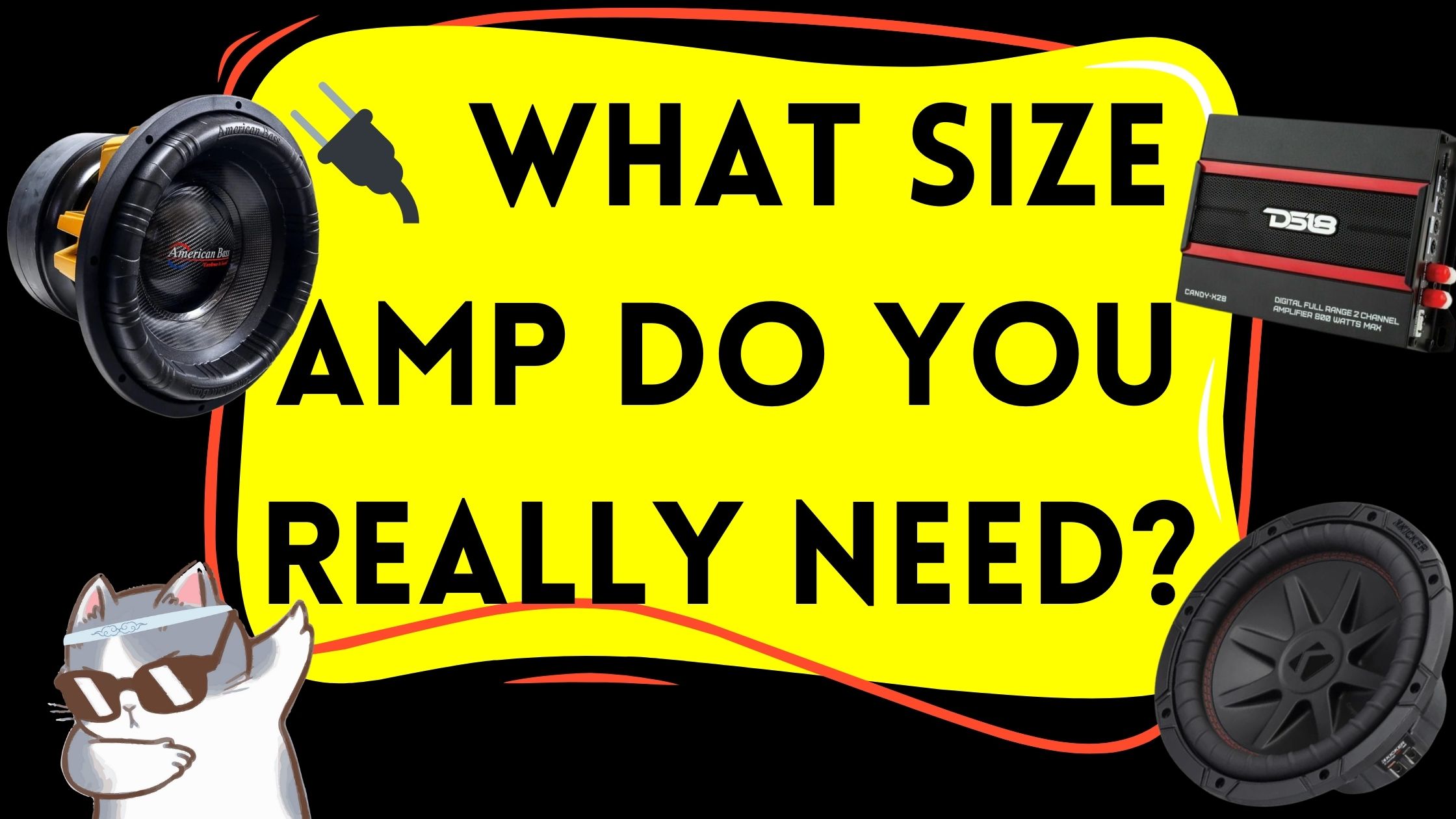🔌 What Size Amp Do You Really Need? A Simple Guide for RMS Matching (Without Blowing Anything Up)Updated 3 months ago
A Simple Guide for RMS Matching (Without Blowing Anything Up)
If you’ve ever wondered whether your amp and sub are really a match made in audio heaven—or a disaster waiting to happen—this guide is for you. We’re going to break down RMS matching in plain English, so you can get clean, powerful sound without the risk of distortion, clipping, or frying your gear.
Let’s plug in and clear it up.
🎯 Why RMS Matching Actually Matters
- RMS (Root Mean Square) is the real power rating to pay attention to.
- It's about how much continuous power your speaker/sub can handle—not the flashy peak numbers.
- A mismatch means you risk distortion, poor performance, or even blown gear.
Goal: Smooth, efficient power delivery with no distortion and no drama.
📊 What Is RMS Power?
- RMS power = average wattage a speaker can handle continuously.
- Peak power = marketing fluff (mostly).
- Your amp’s RMS output should match your speaker’s RMS rating—at the correct impedance.
🔄 The 75%–150% Rule
Here’s a super simple guideline:
Your amp’s RMS output per channel should be between 75% and 150% of your speaker’s RMS rating.
🧮 Examples:
- 100W RMS speaker → amp with 75–150W RMS output
- 500W RMS sub → amp with 375–750W RMS output
🛑 Overpowering vs. Underpowering
- Slight overpowering (with gain properly tuned) is safer than underpowering.
- Underpowering can cause clipping, which leads to distortion and damage.
📌 Quick Tip: “Don’t just match brands—match the numbers.”
🔌 Common RMS Pairings
| Component | RMS Rating/ Impedance | Recommended Amp Output |
|---|---|---|
| Orion CBW104S | 300W RMS/ 4Ω | Marts Digital Monoblock Amplifier Full Range Class D 500W 2 Ohm MXD-500-2 Dedicated Sub Amp |
| B2 Audio RaGE65X | 85W RMS each/ 4Ω | 400W 4 Ohm Class AB 2 Channel Car Audio Amplifier Deaf Bonce Series DB-MLA-2160 RMS Power at 4 Ohms (14.4V): 135W x 2 |
| Deaf Bounce MPT-17N | 25W RMS each/ 4Ω | Deaf Bonce Machete Fight Amplifier 2 Channel 120 Watt RMS Class D MFA-2.80 RMS Power @ 4 Ohm (14.4v): 80 W x 2 |
💡 Pro Tip: Always check both RMS wattage and impedance before buying an amp.
🌀 Impedance: The Other Half of the Puzzle
What Is Impedance?
Impedance (measured in ohms, Ω) is how much resistance your speaker gives the amp. Think of it like backpressure for electricity.
Common car audio values: 2Ω, 4Ω, 8Ω
Matching It Right
- Make sure your amp is rated for your speaker’s impedance.
- Mismatching = reduced output, distortion, or even hardware damage.
Wiring Configurations:
- Series wiring = adds impedance
- Parallel wiring = lowers impedance
⚠️ Always calculate your total load to ensure the amp can handle it.
💥 Common Myths (Let’s Bust 'Em)
- “More watts = louder sound” – Not necessarily. Efficiency and speaker design matter too.
- “Underpowering is safer” – Not true. Clipping from underpowering can be more damaging than slight overpowering.
- “Peak power is the key stat” – Nope. RMS is what matters for everyday use.
🛠️ Practical RMS Matching Tips
- Check official specs – Always trust manufacturer data over guesses.
- Use quality gear – Reputable amp brands give honest RMS and impedance ratings.
- Ask for help – Still unsure? Reach out for professional advice.
- Watch it explained visually:
📞 Need Help?
Still not sure which amp fits your build? We’ve got your back.
Contact Big Jeff Audio for expert advice on matching amps and subs, so you get killer sound—without killing your setup.
By: Pinky @BigJeffAudio - Creative Team
